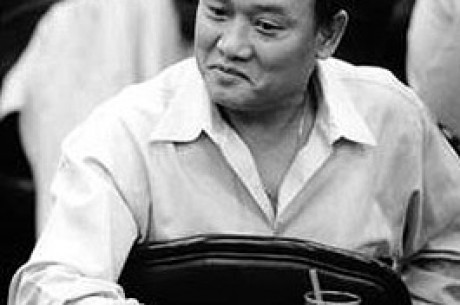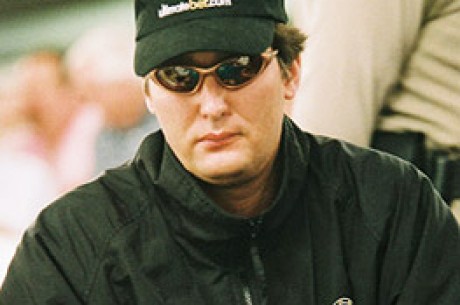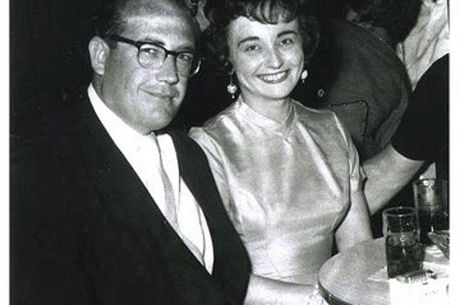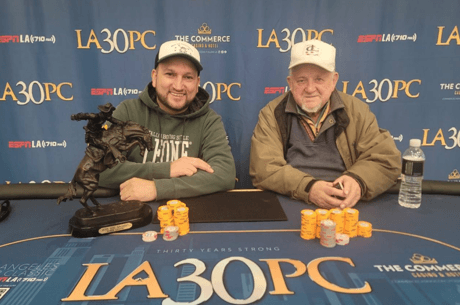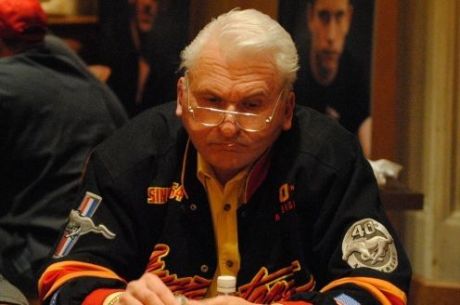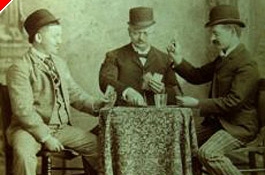Legends of Poker: Erik Seidel
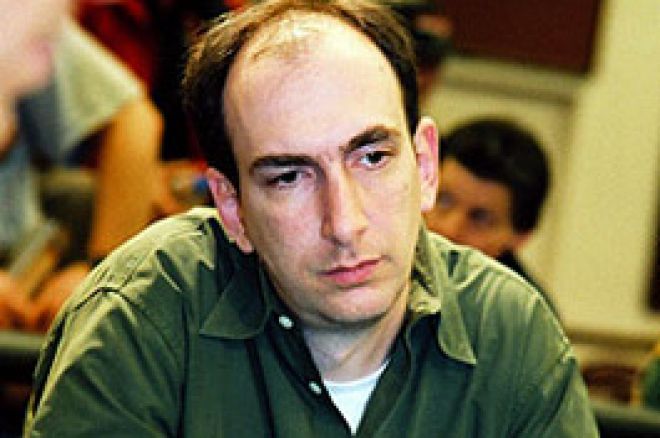
Erik Seidel doesn't always make good copy for the poker press. Talented no-limit combatant Carl Carpenter says: "He's very cerebral, and while he is willing to speak his mind, it's not often easy to pry that can on top of his shoulders open." Carl plays only cash games, and used to be a regular at the Mayfair Club in New York where Erik cut his teeth against players like Howard Lederer, Dan Harrington and Jason Lester. "Erik took quickly to the game, and had a tremendous advantage over so many of today's players in that he was able to play on a regular basis with a handful of very talented players, and then go have dinner and discuss hands with them. That doesn't happen much anymore."
I think Carl and I are both jealous, not of his ability, but of the chance to work-over and discuss hands with so many exceptional players. Poker discussion happens all the time, but most of the players discussing hands together are playing online or in small-stakes games. There aren't many games these days with excellent players gambling for moderate stakes. New players read books, watch poker on TV, and think they have it made, but, as Erik says, "There just isn't any substitute for experience, and I was lucky enough to be in a situation where the backgammon players were poker players too."
Ah, that backgammon thing again. Like a number of professional poker players, Erik, a native New Yorker, started playing backgammon for money in the late 1970's at the age of 17. He attended Brooklyn College, and planned to get a "real" job after receiving his degree, but sometimes "real" is boring. The backgammon kept him busy, and he greatly enjoyed playing tournaments, but then some friends introduced him to stock trading. Erik has stated that Dick Furlaud (who was working at Paine Webber) got him interested, and in just a few months he was trading on Wall Street for Roger Low, another backgammon player.
In the mid 1980's, Erik came to Las Vegas several times for tournaments such as the World Backgammon Amateur Championship. During one of those trips he started playing poker, and also began playing more upon his return to New York. There, at the old Mayfair Club, some of the bridge and backgammon players started playing poker on a regular basis, and that is where Erik learned from some of today's best players like Steve Zolotow and Noli Francisco, among others.
It is no surprise that Erik has the same type of "tight, contemplative" game that Howard Lederer and Dan Harrington have, since they spent so much time together playing at the Mayfair Club. This is a group of three terrific, world-class players, and of the three, Howard would have to be considered the loose one. That's a strange concept, but the Stock crash of 1987 left Erik out of work, and he spent the bulk of his time watching Lederer play, and it has paid off.
According to Erik, his play had improved considerably by 1988, and he headed off to the World Series of Poker at Binion's and played in satellite tournaments where he managed to go zero for nine. Shaken, but still determined, he entered a $1500 no-limit preliminary and then the main event. Not even "The talented Mr. Seidel," as he was referred to in the movie Rounders, could have predicted that when the $10,000 buy-in event got down to just two players, it would be legendary Johnny Chan and Erik Seidel fighting for the championship.
Erik has always downplayed his second-place finish in 1988, saying he was lucky to make the final table, much less find himself head-up against Chan. "It was awful to be in that spot, and be so unprepared." However, his instincts were excellent, and the $280,000 payoff was certainly helpful. There were a few backers to pay off, but the experience left him with a very substantial poker bankroll to continue playing tournaments with.
In 1992, Erik won his first WSOP gold bracelet by besting a large field in the $2500 limit hold'em event. He also won a bracelet in each of the next two years, taking an Omaha eight-or-better $2500 event, and then a $5,000 limit hold'em event in 1994. The victories made his decision to leave New York a bit easier, and he convinced his wife, Ruah, that the move was the right one.
They play tennis together, and Erik has stayed in good enough physical and mental shape to continue winning poker tournaments since the move. His bankroll has been fattened by his continued excellent play, and Erik added a deuce to seven WSOP win in 1998.
Seidel won his largest tournament payoff (at the time) in 2001 when he picked up $411,000 with a no-limit WSOP win. In 2003, he won a pot-limit event, giving him six gold bracelets.
As the fields have grown at the WSOP each year, it seems reasonable that the chance of winning any tournament there is nearly impossible for any specific player, but 2005 was another "golden" year for Erik, as he won his seventh event and pocketed $612,000. His wife remarked that "I never thought he'd make another final table ever again with so many more people playing," but he is just too good to stop.
Over the years, the talented Mr. Seidel has won numerous Bellagio titles, as well as other tournaments, but his record at the WSOP really stands out as excellent, and his seven gold bracelets ties him with Billy Baxter for fourth place all-time. In addition, he is sixth in most cashes (with 40), sixth in first, second and third-place finishes (with 13) and has won almost $3,200,000. That's a mountain of cash.
Contrary to what Erik's wife may have though, I see no reason why a small handful of players, the world's best, won't continue to make final tables and win big in the largest tournaments. And, one of those players is the talented Mr. Seidel.
Ed Note: You can often find Erik Seidel playing at Full Tilt he has his own avatar, and everything!

